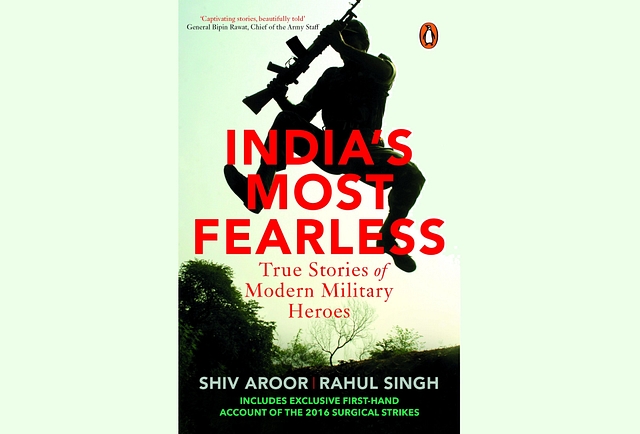
Surgical Strikes: Most Difficult Part Of The Operation Was To Return From PoK, Says Army Major In New Book
As the first anniversary of the surgical strikes across the Line of Control (LoC) in Pakistan-occupied Kashmir (PoK) draws closer, a book by Shiv Aroor and Rahul Singh, titled India’s Most Fearless: True Stories of Modern Military Heroes, brings out fourteen true stories of extraordinary courage and fearlessness, providing a rare glimpse of the great heroism of our soldiers in hostile conditions.
The book brings out the story of the Army major who led the legendary September 2016 surgical strikes on terror launch pads across the LoC; a soldier who killed 11 terrorists in 10 days; a Navy officer who sailed into a treacherous port to rescue hundreds from an exploding war; a bleeding Air Force pilot who found himself flying a jet that had become a screaming fireball and many other brave hearts who showed extraordinary heroism, self-sacrifice and bravery in the most extreme surroundings and under grave provocation.
The book talks in detail about the September 2016 surgical strikes across the LoC, conducted in the aftermath of the terrorist attack in Uri. The Major who led the daredevil mission, referred to as major Mike Tango in the book, says the return from enemy controlled territory was the most difficult part of the job.
The army, the book says, used soldiers from the units that came under attack in Uri. Soldiers from the two units that had lost men were roped in to man border posts, provide terrain intelligence and support the Ghatak platoon that was supposed to carry out the mission in enemy controlled territory.
“The target list was scrutinised along a top-secret chain of command that numbered barely a handful of people, with ‘need to know’ rules applicable throughout. The options were vetted by designated officers from the Intelligence Bureau and the Research and Analysis Wing (RAW), before a final recommended brief was presented to the government,” the authors note, providing details of the planning.
The army and intelligence agencies selected a total of four terror launch pads operated by Pakistan’s Inter-Services Intelligence (ISI) and protected by the Pakistan army for targeting. Two of the terror launch pads identified as targets were well inside PoK and roughly 500 metres away from each other. Two local villagers in PoK and two Pakistani nationals operating in the area — both moles in Jaish-e-Mohammed turned by Indian agencies a few years ago — were contacted.
“All the four assets separately confirmed the target information that was placed before them. In terms of intelligence, there was nothing further for the team to do on this side of the LoC,” the book says.
“As team leader, Maj. Tango had chosen every man himself, including the officers and men who would play a supporting role. He was also acutely aware of the fact that the lives of 19 men were, quite literally, in his hands,” it reads.
“From the moment the firefight began until the last bullet was fired, it had been just over an hour. The frenetic pace of the assault meant the teams, now united after the split attack on two launch pads, would prepare to leave with only a very rough estimate of the number of terrorists they had managed to kill: 20. The figure would be corroborated days later by India’s external intelligence,” the book reads.
Talking about the operations, Major Tango says that the thing which most bothered him was the de-induction of soldiers or the return from the enemy controlled territory. “That’s where I knew I could lose guys,” the book quotes him as recalling.
“A total of 38-40 terrorists and two Pakistan army personnel were killed at the four targets. The three separate teams had simultaneously struck four launch pads across the LoC. Their entry into PoK had been coordinated and precisely timed,” the book says, adding that the Pakistan army — enraged by the cross-border strike — fired with everything they had as Indian soldiers made their way back.
“Their backs would be facing a blaze of fire from Pakistan army posts, belatedly roused from their slumber. And the dominant position held by the posts would make the escaping warriors easy targets to spot and kill,” the book says.
The story of surgical strikes is just one of the many stories that Aroor and Singh have brought out in this book, stories that remain sensitive and may never be declassified.